R.J. Stowell's Blog: rjsomeone, page 27
April 22, 2020
Buy This Book! - FREE to Read on Kindle Unlimited. Yay, Something to Do!
Calif. is the new novel by R.J. Stowell and the standalone sequel to Miles From Nowhere. Proceeds from the novels go directly to the support of AM so that we can continue to bring you the finest in rock lit and history. So, like, you know, please buy this book.
You can order Calif. from Amazon and download it for your Kindle - or you can read it for free on Kindle Unlimited. Kindle Unlimited is a great deal with 1000s of titles like the Harry Potter series, and your first month is free. Here's the link.
Published on April 22, 2020 07:51
The Inner Groove
Many of you know that I am on the radio, including IHeart Radio, Friday mornings, 8:30 EST (well, sometimes 7:30). Most segments are devoted to the music of 50 years ago.The era was so vibrant that never a week goes by that we don't have far too much to cover. 50 years ago, for instance, Paul left the Beatles, Mike Nesmith left the Monkees, Black Sabbath released their debut and Elton John, an unknown in the U.S., made his “tele” debut on the BBC with "Your Song."
It's odd that we are nearly to the point where we can no longer talk about the Beatles 50 years ago. Once the anniversary for the release of Let It Be comes around in May, that’s it. But worry not, we’ll still zero on the tidbits of influence the Beatles continue to have on music today.
Here's a fun one. On this day in 1967, the Beatles recorded the famous "Inner Grove," that follows their magnum opus, "A Day in the Life." According to Barry Miles, the recording of the Sgt. Pepper inner groove was the result of 9 hours of the Beatles screwing around in the studio in an LSD haze: "On 21 April everyone in the studio recorded the run-on spiral for the album, about two seconds’ worth of sound. It was a triple session – three three-hour sessions – which ended around 4am. The Beatles stood around two microphones muttering, singing snatches of songs and yelling for what seemed like hours, with the rest of us standing around them, joining in. Mal carried in cases of Coke and bottles of Scotch. Ringo was out of it. 'I'm so stoned,' he said, 'I think I’m going to fall over!' As he slowly toppled, Mal caught him and popped him neatly in a chair without a murmur. In the control room, no one seemed to notice. A loop was made from the tape of the muttering and was mixed, but not without some altercation between John and the tape operator."
Until recently, I used a fully automatic vintage Magnavox phonograph from 1961. The automated ejector sequence squelched my listening to the inner groove. But now, with my brand-new U-Turn not automatic at all turntable, I get to hear the endless loop of the inner groove in all its glory, forever if I want.
More important than the inner grove, though (and, btw, there is no "inner" grove – there is just one grove on an LP) is the incredible orchestration that sums up “A Day in the Life.” Lennon wanted to conclude with "a sound building up from nothing to the end of the world," and Martin simulated the apocalypse by instructing each instrument in the orchestra to start on the lowest note then ascend for 24 bars (at which point Lennon, McCartney, Starr and road manager Mal Evans each played an E chord on four pianos). "You’ve got to make your own way up there, as slidey as possible so that the clarinets slurp, trombones gliss, violins slide without fingering any notes," Martin told Mark Lewisohn of his instructions. "And whatever you do, don’t listen to the fellow next to you, because I don’t want you to be doing the same thing. Of course, they all looked at me as though I was mad." All in all, it is one of the most famous song sections in music, and for me, particularly as a teacher of English, that "end of the world" reminds me of James Joyce's miraculous Thunderword from Finnegan's Wake; indeed it is that monumental:
"Bababadalgharaghtakamminarronnkonnbronntonnerronntuonnthunntrovarrhounawnskawntoohoohoordenenthurnuk," which represents the expulsion of Adam and Eve from Eden. How fun is that.
See you on the radio! Here's the link: https://www.iheart.com/podcast/966-da... - Hour 3, Segment 2
It's odd that we are nearly to the point where we can no longer talk about the Beatles 50 years ago. Once the anniversary for the release of Let It Be comes around in May, that’s it. But worry not, we’ll still zero on the tidbits of influence the Beatles continue to have on music today.
Here's a fun one. On this day in 1967, the Beatles recorded the famous "Inner Grove," that follows their magnum opus, "A Day in the Life." According to Barry Miles, the recording of the Sgt. Pepper inner groove was the result of 9 hours of the Beatles screwing around in the studio in an LSD haze: "On 21 April everyone in the studio recorded the run-on spiral for the album, about two seconds’ worth of sound. It was a triple session – three three-hour sessions – which ended around 4am. The Beatles stood around two microphones muttering, singing snatches of songs and yelling for what seemed like hours, with the rest of us standing around them, joining in. Mal carried in cases of Coke and bottles of Scotch. Ringo was out of it. 'I'm so stoned,' he said, 'I think I’m going to fall over!' As he slowly toppled, Mal caught him and popped him neatly in a chair without a murmur. In the control room, no one seemed to notice. A loop was made from the tape of the muttering and was mixed, but not without some altercation between John and the tape operator."
Until recently, I used a fully automatic vintage Magnavox phonograph from 1961. The automated ejector sequence squelched my listening to the inner groove. But now, with my brand-new U-Turn not automatic at all turntable, I get to hear the endless loop of the inner groove in all its glory, forever if I want.
More important than the inner grove, though (and, btw, there is no "inner" grove – there is just one grove on an LP) is the incredible orchestration that sums up “A Day in the Life.” Lennon wanted to conclude with "a sound building up from nothing to the end of the world," and Martin simulated the apocalypse by instructing each instrument in the orchestra to start on the lowest note then ascend for 24 bars (at which point Lennon, McCartney, Starr and road manager Mal Evans each played an E chord on four pianos). "You’ve got to make your own way up there, as slidey as possible so that the clarinets slurp, trombones gliss, violins slide without fingering any notes," Martin told Mark Lewisohn of his instructions. "And whatever you do, don’t listen to the fellow next to you, because I don’t want you to be doing the same thing. Of course, they all looked at me as though I was mad." All in all, it is one of the most famous song sections in music, and for me, particularly as a teacher of English, that "end of the world" reminds me of James Joyce's miraculous Thunderword from Finnegan's Wake; indeed it is that monumental:
"Bababadalgharaghtakamminarronnkonnbronntonnerronntuonnthunntrovarrhounawnskawntoohoohoordenenthurnuk," which represents the expulsion of Adam and Eve from Eden. How fun is that.
See you on the radio! Here's the link: https://www.iheart.com/podcast/966-da... - Hour 3, Segment 2
Published on April 22, 2020 07:27
Now That There's Time
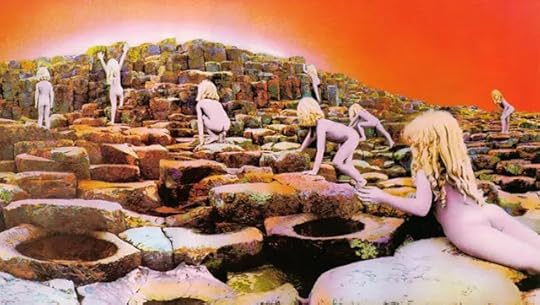 Digital Downloading did a number on the concept LP; on the album in general. Since the Beatles' Rubber Soul, LPs were meant to be listened to in their entirety. Music was something to do, not something for the background. Now that there’s time, here are some of those albums, concept albums, meant to be listened to, sitting on the couch between the speakers.
Digital Downloading did a number on the concept LP; on the album in general. Since the Beatles' Rubber Soul, LPs were meant to be listened to in their entirety. Music was something to do, not something for the background. Now that there’s time, here are some of those albums, concept albums, meant to be listened to, sitting on the couch between the speakers.Pink Floyd – Animals 1977(George Orwell – Animal Farm, 1945) A farmyard critique of the socio-political Britain of the 1970s. Divided into three groups; (the ruthless) pigs, (the combative) dogs and (the unquestioning) sheep that represent the social hierarchy. Orwell, a popular choice for influence, also inspired Bowie's Diamond Dogs and Muse's The Resistance.
Led Zeppelin – IV 1971(J. R. R. Tolkien – Lord of the Rings 1955) Although Led Zeppelin's catalog is peppered with Tolkien references, owing to Robert Plant’s fascination with the series, Led Zeppelin IV is the most obvious choice to reference. Songs like "Battle of Evermore" which mentions the Ringwraiths, Sauron's servants of Middle Earth and "Misty Mountain Hop" pay homage to the Misty Mountains, described by Tolkien in Return of the King. Led Zeppelin were exceedingly conceptual, even when an LP ventured away from the subject matter. Case in point the cover for Houses of the Holy, a take on Arthur C. Clarke's magnificent novel, Childhood's End.
Camel – The Snow Goose 1975(Paul Gallico – "The Story of the Snow Goose: Story of Dunkirk," 1940) This one is based on Gallico’s emotional short story of the same name, an illustrated story of friendship and love set against the backdrop of war and loss. The musical accompaniment is a suitably sensitive and atmospheric journey, which can reportedly be listened to alongside reading the novella. No, I haven't tried it. I've watched the Star Sequence of 2001 while listening to Pink Floyd’s "Echoes," but reading to music eludes me.
The Alan Parsons Project – I Robot 1977(Isaac Azimov - I Robot - 1950s) You might think a spacey/funky concept record based on the works of Isaac Asimov would be as corny as Kansas in August, but I Robot is not that STYX album with "Mr. Roboto" (note: I kinda like "Mr. Roboto"). If the textured, mostly instrumental songs on this release aren't convincing enough of its merit, consider that band member Eric Woolfson spoke at length with Asimov about the album's concept, and the author was on-board with it. Everything was concept with Parsons, by the way, the engineer who gave us Dark Side of the Moon. His first "Project" LP was Tales of Mystery and Imagination by Edgar Allen Poe; another must-listen.
Bruce Springsteen – The Ghost of Tom Joad 1995Inspired by the book and John Ford’s 1940 film adaptation, as well as by Woody Guthrie’s "The Ballad Of Tom Joad," Springsteen wrote The Ghost Of Tom Joad, a modern-day appropriation of the same Great Depression, a stripped-down acoustic album, not unlike Nebraska.
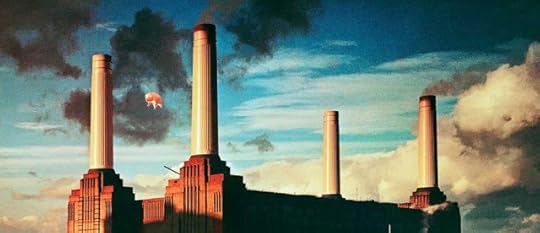
Published on April 22, 2020 05:16
April 18, 2020
A Month of Sundays – Social Distancing – Albums Based on Literature
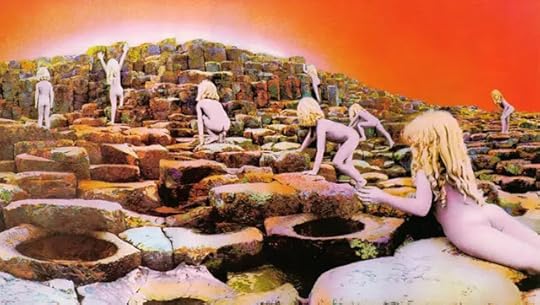
Digital Downloading did a number on the concept LP; on the album in general. Since the Beatles’ Rubber Soul, LPs were meant to be listened to in their entirety. Music was something to do, not something for the background. Now that there’s time, here are some of those albums, concept albums, meant to be listened to, sitting on the couch between the speakers.Pink Floyd – Animals 1977(George Orwell – Animal Farm, 1945)A farmyard critique of the socio-political Britain of the 1970s. Divided into three groups; (the ruthless) pigs, (the combative) dogs and (the unquestioning) sheep that represent the social hierarchy. Orwell, a popular choice for influence, also inspired Bowie’s Diamond Dogs and Muse’s The Resistance.Led Zeppelin – IV 1971(J. R. R. Tolkien – Lord of the Rings 1955)Although Led Zeppelin’s catalog is peppered with Tolkien references, owing to Robert Plant’s fascination with the series, Led Zeppelin IV is the most obvious choice to reference. Songs like “Battle of Evermore” which mentions the Ringwraiths, Sauron’s servants of Middle Earth and “Misty Mountain Hop” pay homage to the Misty Mountains, that are described by Tolkien in Return of the King. Led Zeppelin were exceedingly conceptual, even when an LP ventured away from the subject matter. Case in point the cover for Houses of the Holy, a take on Arthur C. Clarke’s magnificent novel, Childhood’s End.Camel – The Snow Goose 1975(Paul Gallico – The Story of the Snow Goose: Story of Dunkirk, 1940)This one is based on Gallico’s emotional short story of the same name, an illustrated story of friendship and love set against the backdrop of war and loss. The musical accompaniment is a suitably sensitive and atmospheric journey, which can reportedly be listened to alongside reading the novella. No, I haven’t tried it. I’ve watched the Star Sequence of 2001 while listening to Pink Floyd’s Echoes, but reading to music eludes me.The Alan Parsons Project – I Robot 1977You might think a spacey/funky concept record based on the works of Isaac Asimov would be as corny as Kansas in August, but I Robot is not that STYX album with "Mr. Roboto" (note: I kinda like "Mr. Roboto"). If the textured, mostly instrumental songs on this release aren't convincing enough of its merit, consider that band member Eric Woolfson spoke at length with Asimov about the album's concept, and the author was on-board with it. Everything was concept with Parsons, by the way, the engineer who gave us Dark Side of the Moon. His first “Project” LP was Tales of Mystery and Imagination by Edgar Allen Poe; another must-listen.Bruce Springsteen – The Ghost of Tom Joad 1995Inspired by the book and John Ford’s 1940 film adaptation, as well as by Woody Guthrie’s “The Ballad Of Tom Joad,” Springsteen wrote The Ghost Of Tom Joad, a modern-day appropriation of the same Great Depression, a stripped-down acoustic album, not unlike Nebraska.
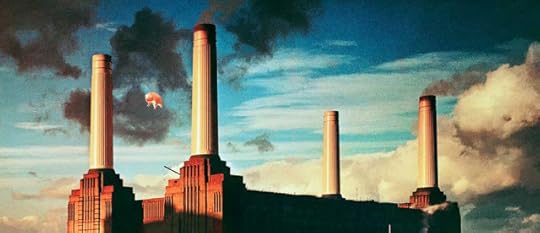
Published on April 18, 2020 05:53
April 14, 2020
Bill's Signs
 BillIn 1966 my father closed his sign shop at the corner of Saticoy and Woodman Avenue in the San Fernando Valley, just across from the Gas Giant. The shop, Bill's Signs, was only moderately successful, and he had been offered a position as the principal artist for Foster and Kleiser, a company that owned and maintained billboards. At the time, billboards were akin to wallpaper for the most part, but not on the Sunset Strip. There they were hand-painted and in-your-face and would become as iconic driving down the Strip as the Chateau Marmont or the statue of Rocky and Bullwinkle. My father's first billboard was The Doors, and over a 14 year span, he was responsible for Joni Mitchell’s Blue, Captain Fantastic and the Brown Dirt Cowboy, Crosby, Stills, Nash and Young’s So Far and dozens of others. I didn’t see my father much growing up, but if I ever needed him, I knew where to go; I'd just cruise down Sunset, and although I wasn't allowed, once I found him I'd climb the ladder to the platform and we'd sit, our feet dangling over the edge, and talk as we gazed at the city in the smog.
BillIn 1966 my father closed his sign shop at the corner of Saticoy and Woodman Avenue in the San Fernando Valley, just across from the Gas Giant. The shop, Bill's Signs, was only moderately successful, and he had been offered a position as the principal artist for Foster and Kleiser, a company that owned and maintained billboards. At the time, billboards were akin to wallpaper for the most part, but not on the Sunset Strip. There they were hand-painted and in-your-face and would become as iconic driving down the Strip as the Chateau Marmont or the statue of Rocky and Bullwinkle. My father's first billboard was The Doors, and over a 14 year span, he was responsible for Joni Mitchell’s Blue, Captain Fantastic and the Brown Dirt Cowboy, Crosby, Stills, Nash and Young’s So Far and dozens of others. I didn’t see my father much growing up, but if I ever needed him, I knew where to go; I'd just cruise down Sunset, and although I wasn't allowed, once I found him I'd climb the ladder to the platform and we'd sit, our feet dangling over the edge, and talk as we gazed at the city in the smog.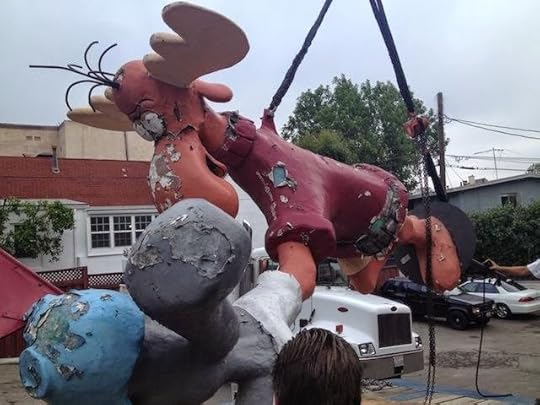 Jim Morrison looked out over a changing Hollywood and wrote "L.A. Woman;" a song about change and loss. The billboards along Sunset today are primarily for Calvin Klein or BMW; a statement itself in how the Strip has evolved. There has always been speculation who the L.A. Woman might be, with Pamela Courson the obvious choice; in reality the L.A. Woman was Los Angeles: "Never saw a woman so alone..."
Jim Morrison looked out over a changing Hollywood and wrote "L.A. Woman;" a song about change and loss. The billboards along Sunset today are primarily for Calvin Klein or BMW; a statement itself in how the Strip has evolved. There has always been speculation who the L.A. Woman might be, with Pamela Courson the obvious choice; in reality the L.A. Woman was Los Angeles: "Never saw a woman so alone..."Jac Holzman of Elektra Records was the first to venture into this advertising medium. For $1,200 a month, he reserved a sign near the Chateau Marmont hotel , and inaugurated it with the Doors, who were the "house band" at the Whisky A-Go-Go just down the street. Holzman reasoned that L.A. disc jockeys would see the sign on their way to work, saying the billboard was "a calling card for the artist, but it was a very large calling card."
I have just one photo of my father's work (Peewee's Big Adventure), but others weren't so foolish. Below is a collection of Sunset Billboards, some from Robert Landau's fabulous coffee table book, Rock 'n' Roll Billboards of the Sunset Strip (available through Amazon). I do not own the rights to these photos, only the rights to my father. And, of course, you can read so much more in Jay and the Americans. Click on the links in the sidebar, please!
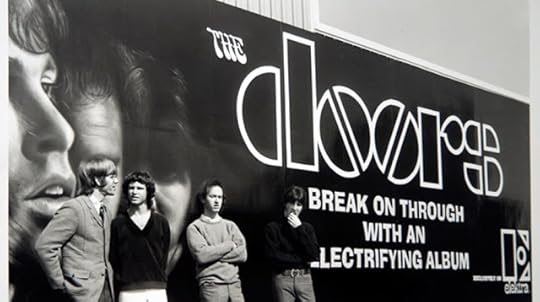
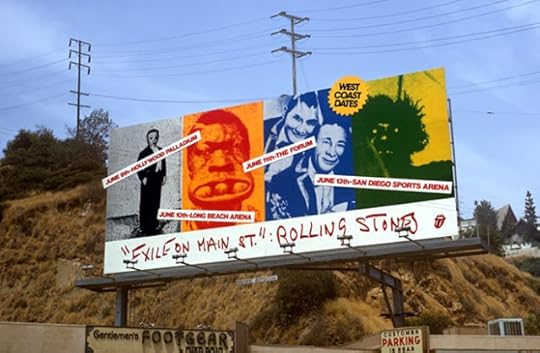
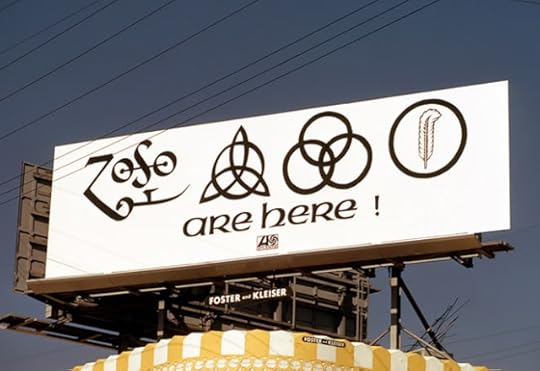



"That is the ugliest thing I've ever seen in my life," Springsteen said when he saw the billboard for Darkness on the Edge of Town (not my father's - wrong company). The Boss proceeded to "enhance" it with graffiti. Springsteen, Clarence Clemons, bassist Garry Tallent, and some crew members arrived late at night with twenty cans of black spray paint. Springsteen wrote "E Street" himself while standing on Clemons' shoulders. "I wanted to get to my face, and paint on a mustache," he said. "But it was just too damn high.
Published on April 14, 2020 06:11
Bill's Signs and 10cc
 I got us chili-dogs and sodas and I climbed the ladder without asking. He looked at me sheepishly. He didn't say a word. "I got you a chili-dog," I said. We sat with our legs hanging off the gantry. "I haven't been there for you," he said. He looked away. "Doesn't matter." I kept thinking about a conversation we had when I was little: "What do you want me to be when I grow up?" I asked.
I got us chili-dogs and sodas and I climbed the ladder without asking. He looked at me sheepishly. He didn't say a word. "I got you a chili-dog," I said. We sat with our legs hanging off the gantry. "I haven't been there for you," he said. He looked away. "Doesn't matter." I kept thinking about a conversation we had when I was little: "What do you want me to be when I grow up?" I asked."I want you to be happy." "No, I mean – do you want me to be a scientist? A doctor? A pilot? That's what I’m asking you." "It doesn't matter what job you do. I just want you to be happy." "You’re not answering me. I don't want you to tell me you want me to be happy. I want you to tell me: doctor, teacher, grave digger." "Where does that come from?" "I don’t know." "I just want you to be happy." "Just tell me what. I want you to tell me which way to go." He didn't.
I looked out over my city, but it was gone. I said, "Hazy." He said, "Been that way." "What have you been doing?" "Working. School all right?" "Yeah." "Got a girl?" "Kinda." He had chili on his chin. I reached over with a napkin and wiped it off. "It's my birthday." It wasn’t. He didn’t know. "This is a nice one. Lotta nice detail." "Lotta work," he said. "Maybe on Wednesday…" I cut him off. "Wednesday's not good." "Saturday." "I don’t know." He looked at me. He said, "Happy birthday, pal." "I gotta go." "Thanks for coming by." He looked at me. I think I looked back with a furrowed brow, not anger, concern. "So, I'll call you," he said and I climbed down the ladder. When I got home my grandmother was watching The Big News with Gerry Dunphy. It was just ending and Gerry Dunphy said, "From the desert to the sea to all of Southern California, a good evening." I sat on the arm of the chair and put my arm around my grandmother's shoulder. The phone rang. It was Gaia. She said, "Listen to this." The song was "I'm Not in Love." "Do you love it?" she said
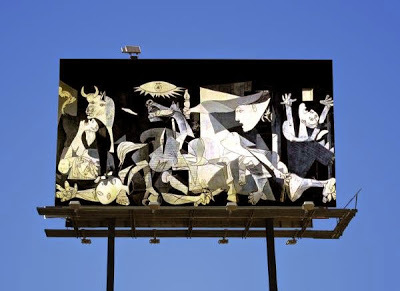 Love it, hate it, or simply hang it on the wall to cover up a nasty stain, "I'm Not in Love" is among the most influential songs of the 70s. Composed by Graham Gouldman and Eric Stewart, it is, at its heart, a sordid little exercise, an examination of love from the point of view of a victim who refuses to believe he's succumbed. As an edited single, and across the full length LP track, "I'm Not in Love" first earned admiration for its production techniques, with some 256 vocal dubs required to complete the lush harmonies behind Stewart's vocal. Add the whispered tones of a studio receptionist for the surrealistically nightmarish admonition "Big boys don't cry," and "I'm Not in Love" breached frontiers of creativity which even Queen's "Bohemian Rhapsody," later that same year (1975), could only nudge.
Love it, hate it, or simply hang it on the wall to cover up a nasty stain, "I'm Not in Love" is among the most influential songs of the 70s. Composed by Graham Gouldman and Eric Stewart, it is, at its heart, a sordid little exercise, an examination of love from the point of view of a victim who refuses to believe he's succumbed. As an edited single, and across the full length LP track, "I'm Not in Love" first earned admiration for its production techniques, with some 256 vocal dubs required to complete the lush harmonies behind Stewart's vocal. Add the whispered tones of a studio receptionist for the surrealistically nightmarish admonition "Big boys don't cry," and "I'm Not in Love" breached frontiers of creativity which even Queen's "Bohemian Rhapsody," later that same year (1975), could only nudge.
Tautology is a deployment of repetitive words or phrases. It can suggest a weakness of argument by the speaker. 10 cc’s words, “I’m Not In Love” are repeated to almost soporific effect. Repetition used in this context serves more as an attempt at emotional exorcism. Depeche Mode would utilize this same concept in "But Not Tonight" with the same emotional intent.
There is a celestial tone that suffuses the song. The choral voices are plaintive and convey a suffering experienced by all. We've all been moved to love and unlove. Can one's emotions be richer when you understand the agony felt by someone who loves you? If you can't reciprocate that love, do you feel sympathy? Pity? Can you silently revel by coming out ahead in this interplay of emotions. You've won, they've lost. Is the victory even grander when the vanquished is still consumed by you?
10cc were odd; weirdos by subterfuge, yet somehow, amidst the myriad weird of the 70s, 10cc were strangely accessible (or accessibly strange). There was so much going on that kept snagging my attention – ordinarily in an article I take the less personal identity of "we," hoping to remain objective, as if I could speak for all of us, but with 10cc it was seemingly only me; no one else was listening. From quirky little songs channeling Vera Lynn (look it up), to the AM10 single "I'm Not In Love" (my favorite single of all time), 10cc were noticed yet unnoticed, brilliant and unappreciated.
Comprised of art school students Lol Creme, Kevin Godley, Graham Gouldman and Eric Stewart, few were aware of the impact each had had on music in the 1960s, particularly Graham Gouldman who penned The Yardbirds' "Game of Love," The Hollies' "Bus Stop" (another AM10 single) and Herman’s Hermits' "No Milk Today."
The four released their first album, simply called 10cc, in 1973 and Sheet Music in '74 to huge European acclaim, but failed any notice in the American market. That would change in 1975 with the release of "I'm Not In Love," though the album, The Original Soundtrack (AM7), was largely ignored, except by me – not because I was smarter than anyone else, or more musically savvy, but because I too was a weirdo. The following year would see the foursome's last album together and finally a little American love (well, critical acclaim) on How Dare You! Here the band was at its most cohesive and, despite the failure to chart in the US, How Dare You! not only received my applause, but a couple kids down the block had the album as well. The quirky "Don't Hang Up" was typical of Kevin Godley and Lol Creme and another of my fave [non] singles.
Godley and Creme would go their own way to produce Consequences, which passed right by without notice, and then L and Freeze Frame, both AM7s (each having little in the way of obvious influence or longeveity – they're both 9s in my book). Meanwhile, back at the 10cc front, Gouldman, Stewart et al released Deceptive Bends and celebrated with a top ten single, "The Things We Do For Love."
Published on April 14, 2020 06:11
Foster and Kleiser
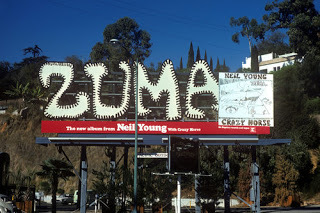 In the ten years following the release of Rubber Soul, rock music evolved from the Beatlescentric Brit invasion and the folk-rock of Laurel Canyon to an unprecedented diversity, along the way leaving us L.A. Woman, Blue, Deja Vu, Sgt. Pepper and Pet Sounds, American Beauty and Dark Side. 1976 gave us the first post-Gabriel Genesis LP, the jazz-infused Royal Scam by Steely Dan (not to mention Joni's Hejira), the blue-eyed soul of Bowie's Station to Station and the Eagles' Hotel California. Rock music was all over the map.
In the ten years following the release of Rubber Soul, rock music evolved from the Beatlescentric Brit invasion and the folk-rock of Laurel Canyon to an unprecedented diversity, along the way leaving us L.A. Woman, Blue, Deja Vu, Sgt. Pepper and Pet Sounds, American Beauty and Dark Side. 1976 gave us the first post-Gabriel Genesis LP, the jazz-infused Royal Scam by Steely Dan (not to mention Joni's Hejira), the blue-eyed soul of Bowie's Station to Station and the Eagles' Hotel California. Rock music was all over the map.
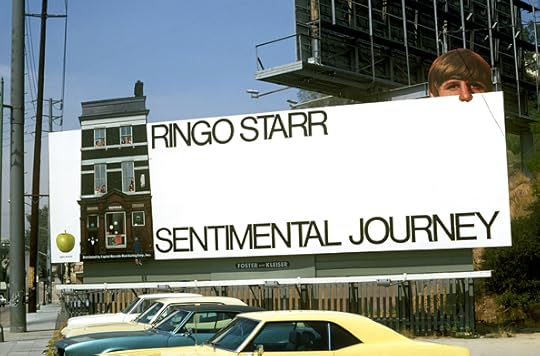
In L.A., music was who we were, what we did, and it manifested itself at Tower Records, at the Roxy and the Whiskey, and through Bill's Signs, which was the working title for Jay and the Americans. My father was the Leonardo of the Sunset Strip.
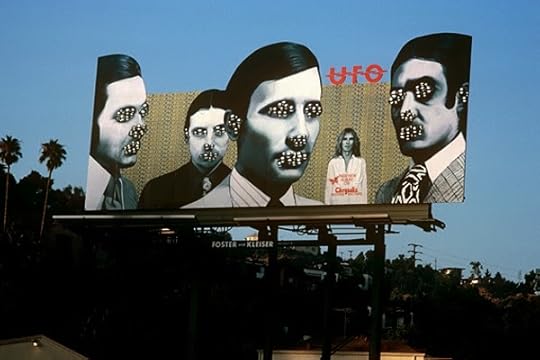 In 2012, probably without knowing him (my father's fame was anonymous), Robert Landau published what for him took a lifetime, a virtual retrospective of Bill's Signs, Rock 'n' Roll Billboards of the Sunset Strip, a beautiful coffee table book published by Angel City Press (available on Amazon and at Barnes and Nobel). Landau stated, "I was a kid and a music fan, I was buying those records, but my sensibility was more visual. I was drawn to the billboards because they were so non-commercial. A lot of them didn't even have text on them. It was like having an art gallery in my back yard."
In 2012, probably without knowing him (my father's fame was anonymous), Robert Landau published what for him took a lifetime, a virtual retrospective of Bill's Signs, Rock 'n' Roll Billboards of the Sunset Strip, a beautiful coffee table book published by Angel City Press (available on Amazon and at Barnes and Nobel). Landau stated, "I was a kid and a music fan, I was buying those records, but my sensibility was more visual. I was drawn to the billboards because they were so non-commercial. A lot of them didn't even have text on them. It was like having an art gallery in my back yard." 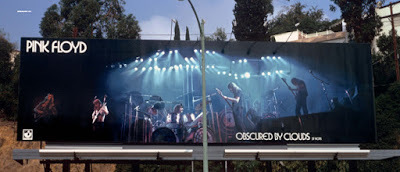 "The first one I shot was in 1969, for one of my favorite albums—the Beatles' Abbey Road. But in my research for the book, I talked to Jac Holzman, the founder of Electra Records, and he told me the first billboard that went up was for the Doors in 1967. They'd be up for a month, and then they'd all be painted over and a new one would go up," said Landau. That was my father's first billboard.
"The first one I shot was in 1969, for one of my favorite albums—the Beatles' Abbey Road. But in my research for the book, I talked to Jac Holzman, the founder of Electra Records, and he told me the first billboard that went up was for the Doors in 1967. They'd be up for a month, and then they'd all be painted over and a new one would go up," said Landau. That was my father's first billboard. Because of my father and those billboards, I grew up a writer and a music critic, but I never once asked him about his work or if he realized the impact of those billboards. He retired from Foster and Kleiser in 1977 and opened an art gallery in Jerome, Arizona, a "ghost town" in the desert between Prescott and Sedona. That was what he was proud of. The billboards were just life, a job, how he was able to mail out his child support checks and pay for his prized red Barracuda. To me, he really was Leonardo, on a grand scale.
Jay and the Americans (like Miles from Nowhere), is available all over the world!
Get your copy today!
CreateSpace - Amazon - Amazon UK - Amazon France - Amazon Russia

Published on April 14, 2020 06:10
April 13, 2020
Beatles - Discography - And in the end...
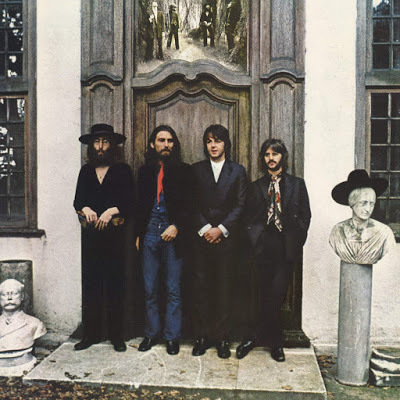
Many consider Rubber Soul to be the very first pop album, and by that I mean that each song was meant to be listened to, in order, with the album as a whole the focus rather than it being a collection of singles. Because of that, Rubber Soul is one of the most influential albums in music history; in particular, it is the album that inspired Brian Wilson to create his masterpiece Pet Sounds, Rolling Stone’s No. 2 album of all time.
Once again though, the British release of Rubber Soul was different from the one released by Capitol in the US. While I admire Capitol's reasoning for Meet the Beatles (all original material) and considerate it the better album over its British counterpart, I have mixed emotions about the differences in Rubber Soul.
Capitol's goal was to cash in on the acoustic folk craze in the U.S., and so they left off the songs "Drive My Car," an up-tempo rocker, the ballad, "Nowhere Man," "If I Needed Someone," and "What Goes On," replacing them with "I've Just Seen a Face" and "It's Only Love," from HELP! Both editions of the LP are stellar, and I go back and forth, leaning a little more to the American release, which will not be the case once we get to Revolver.
Before we do though, in America there was an album in-between called Yesterday and Today, which has four songs that weren"t on the American issue of Rubber Soul, three that won't be on Revolver when it’s released later in the year, two from HELP! and the singles, "We Can Work it Out" and "Day Tripper." There's nothing to compare it to in terms of a British equivalent, but it is an LP that truly stands on its own with songs like "I'm Only Sleeping," "Yesterday," "Nowhere Man" and "Drive My Car." The LP is famous for its "butcher cover," which we’ve covered before, making it one of the most valuable collectibles on vinyl.
 The Beatles responded to the Beach Boys' Pet Soundswith Revolver. There were 14 songs on the British addition and for the American release, all Capitol did was to remove those three songs that appear on Yesterday and Today. And while I'm a fan of "And Your Bird Can Sing" and "Dr. Robert," it’s the omission of "I’m Only Sleeping" that for me makes the British release far superior.
The Beatles responded to the Beach Boys' Pet Soundswith Revolver. There were 14 songs on the British addition and for the American release, all Capitol did was to remove those three songs that appear on Yesterday and Today. And while I'm a fan of "And Your Bird Can Sing" and "Dr. Robert," it’s the omission of "I’m Only Sleeping" that for me makes the British release far superior.Sgt. Pepper would be the very first Beatles LP to be a standard-issue for both the American and British audience, but that would not be the case for Magical Mystery Tour. The remainder of the British LPs would be identical to those released in the U.S. and include The White Album(officially called The Beatles), Yellow Submarine, Abbey Roadand Let It Be, but Capitol Records wasn't done cashing in on The Beatles, and so before the release of Let It Be came the album, Hey Jude, an LP that kind of collects everything that wasn't used already. There are two songs from A Hard Day's Night, the double-sided "Paperback Writer" and "Rain" single, the double-sided "Revolution" and "Hey Jude," the double-sided "Old Brown Shoe" with "The Ballad of John and Yoko," plus "Lady Madonna" and "Don’t Let Me Down." The LP has a stellar album cover and serves really as a survey of their career going all the way back to 1964. Keep in mind that with the exception of the songs from A Hard Day's Night, the rest of the LP is essentially all original material never before released on an album. The LP was originally titled The Beatles Again, but was changed last minute to promote the "Hey Jude" single. Collectors note: this is an inexpensive collectible (around $40). While it does not say The Beatles Again on the cover, it is written on the spine and on the label. One more note: the front cover was initially the back cover, once again swapped last minute.
Just three months later the last of the 11 British LPs, Let It Be, was released, a month after the Beatles had called it quits. On the back of the Let It Be cover you’ll find the words "This is a new phase BEATLES album," but of course, it wasn't.
On April 10, 1970, Paul released his first solo LP and stated in a Q&A that the Beatles had called it quits. Was that the new phase? The news was announced to the world the next day, but Let It Be was still to come.
Published on April 13, 2020 07:51
April 12, 2020
Follow AM on FaceBook

AM and Miles From Nowhere are now on FaceBook! Join us. Don't forget to follow Miles on his further adventures from nowhere. We hope the Facebook page will enhance the AM experience as we celebrate the music we love.
If you haven't already done so, don't miss out reading Miles From Nowhere; it's free on Kindle Direct and available both here on AM and on Amazon. It leads to the new novel, Calif., the further travels of Miles, also available from Amazon.
Send an email to rjsomeone@gmail.com for a personalized copy.
Published on April 12, 2020 18:03
Calif. - The Beatles

Calif. – 50 Years AgoOn my IHeart Radio show, on FB and here on AM, my focus is often the rock music of 50 years ago. My new novel, Calif., reflects that as well and when you are reading it, many of the happenings are indeed 50 years ago to the day. Here’s an excerpt from the novel – to the day…It’s funny, I don’t remember birthdays and one Christmas blends into the next, but I do indeed remember April 10th.
I made it a habit of getting up early, despite getting home so late. It seemed as if the more famous the act, the earlier we got to go home. It was the up and coming artists (and those who’d never make it) that stuck around afterwardand sat on the couch in the back or at the bar, and we’d sweep up around them.
At times, Mr. Chadwick brought me home. I’d acquiesce on foggy nights, there were a lot of those, but when it was clear and the moon was out,when you could see the stars reflecting off the sea, I’d walk slowly back home along the highway.
I’d get up, do my chores and walk into town or down to the Little Sur Diner. I’d have my breakfast and schmooze, then meander back home. I’d watch the new people come and the old people go. It was nice to be a part of a community, transient as it was.
It was on the morning of April 10th, and I honestly wouldn’t have known or cared what date it was, when I walked down the highway to the Little Sur. I got the paper and stuck it under my arm. The Little was a tan masonry building from the 50s with a big flourish of a marquee. There was a counter in back and booths along the window. They made a stellar breakfast and a good cup of coffee.
I ordered a Belgian waffle, coffee, and OJ, then I looked at the paper. Under the fold was the real news: Paul McCartney had called it quits; the Beatles had split. It wouldn’t have been worse news if Paul were really dead, though no one in the diner seemed concerned. The waitress, whose name was Dot, came to the table. “You see this?” I asked.
“No,” she said, “I missed that. More coffee, sweetheart?” I put a hand over my cup.That night at the Cat, a folky girl sang “For No One.” She sang it slow and sad like she wanted to cry. When she finished she said, “Stupid Paul” and sang a song of heartbreak.
Published on April 12, 2020 05:03



